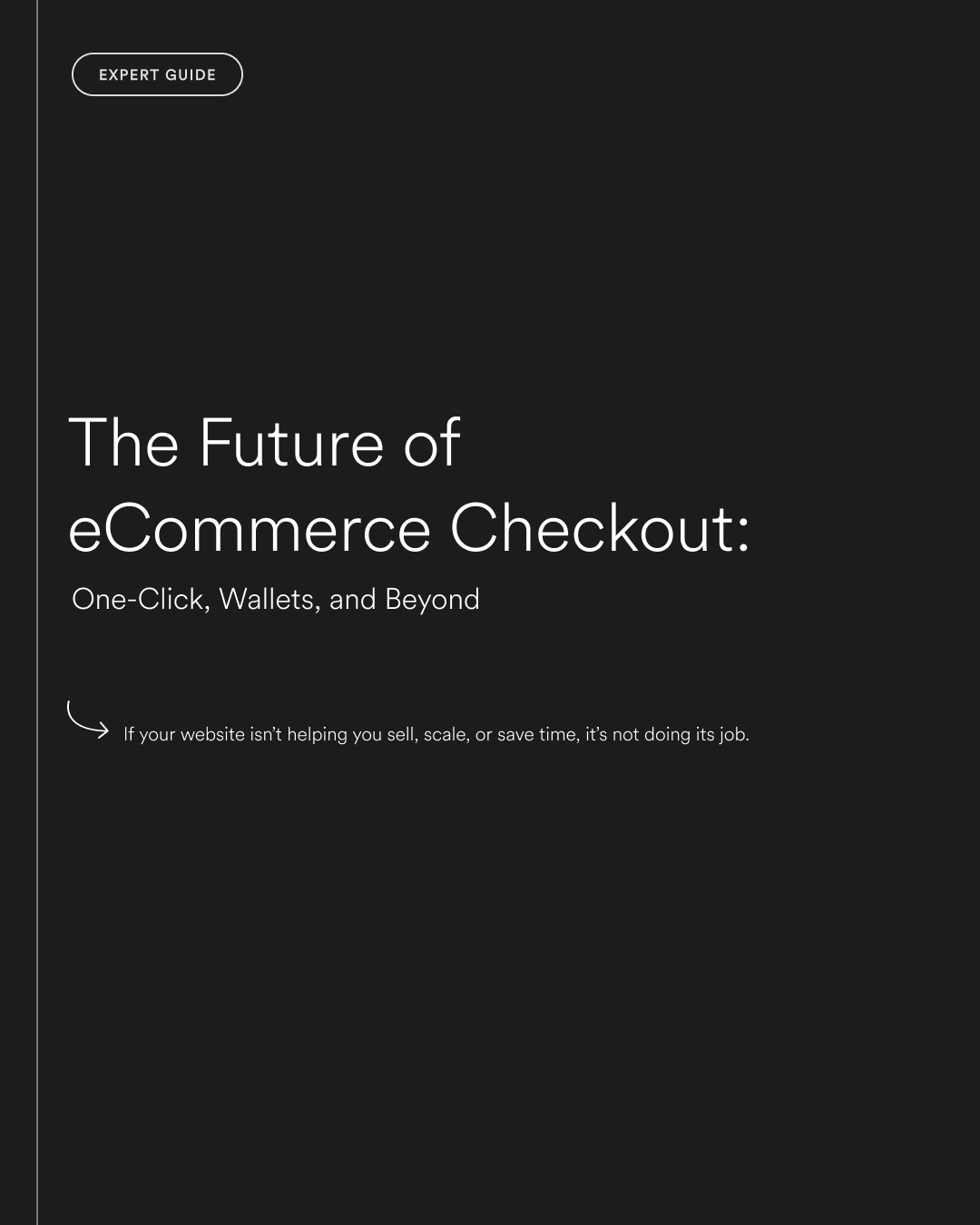Let’s be blunt: if your website isn’t helping you sell, scale, or save time, it’s not doing its job.
Plenty of businesses settle for websites that look decent but quietly underperform. Slow to load. Hard to update. Clunky on mobile. Or worse, disconnected from the actual goals of the business. Maybe it was built a few years ago and patched ever since. Maybe you threw something together quickly and never went back. Maybe your team is constantly asking, "Can we even update this ourselves?"
If any of that rings true, this article is for you.
Why Website Strategy Matters (More Than You Think)
Your website isn’t just a digital brochure. It’s your hardest-working salesperson, your smoothest operations assistant, and the front door to your brand. When it’s built right, it can:
- Convert more customers without needing more ads
- Scale with your business without constant developer input
- Build trust faster with better UX and messaging
- Save your team hours by integrating the right tools
If your website isn’t doing these things, you’re leaving money and momentum on the table.
Key Tip: A better website isn’t just about looks. It’s about leverage. Smart builds turn static websites into high-performing business tools.
The Real Cost of a Mediocre Website
1. You lose leads you never knew you had
Visitors don’t fill out the form. They bounce halfway through checkout. They can’t find what they need. You never hear from them and never know what you missed.
Fix it: Use tools like Hotjar or Microsoft Clarity to watch user behaviour. If people are dropping off at the same point, there’s a problem worth solving.
2. Your team wastes time on workarounds
If your website needs a developer for every tiny update, or your CMS is a labyrinth, your team is stuck doing admin instead of adding value.
Fix it: Build on platforms like Webflow or Shopify that put the power back in your team’s hands. Simple updates should be simple.
3. You’re spending more on ads to make up for bad UX
A high-performing site makes your paid campaigns more efficient. If your conversion rate is low, your cost-per-lead is higher than it should be.
Fix it: Focus on conversion design: clear CTAs, consistent messaging, fast load times, and a user journey that makes sense.
4. You can’t scale without stress
If your backend is cobbled together, or your Shopify theme breaks every time you change a product, growth becomes painful.
Fix it: Choose clean builds that scale easily. Use native platform functionality where possible, and avoid piling on custom code unless it’s essential.
5 Strategic Moves to Make Your Website a Business Asset
1. Start with your business goals, not a template
Too many sites are designed backwards: picking a theme first, then trying to shoehorn content into it.
Flip it. Start by asking: What does this website need to achieve in the next 12 months?
That could be:
- Booking more demos
- Improving retention via better onboarding
- Launching a new product line
- Reducing support tickets
Design flows and features around those goals. A template can’t do that for you.
2. Own your platform
Shopify and Webflow are both powerful if used properly. The biggest wins often come from:
- Stripping back unnecessary apps and add-ons
- Using built-in tools before reaching for custom ones
- Structuring your CMS for real content workflows
The goal is freedom. Your team should be able to manage the site without needing to call in favours every week.
3. Design for decisions, not decoration
Pretty doesn’t always convert. You need:
- Clear value props above the fold
- Strong hierarchy to guide attention
- Mobile-first layouts that don’t compromise usability
Make it easy for people to take the next step, whatever that is.
4. Integrate for efficiency
A website that plays nicely with your other tools can save serious time. That might mean:
- Pushing Webflow form data into HubSpot
- Using Shopify Flow to automate fulfilment
- Embedding review tools or inventory syncs
These integrations reduce manual work and cut errors.
5. Build for change
Your website should evolve as your business does. That means setting up your CMS to grow, not lock you in.
Real-world example: A client launched with 3 services, but by month 6, had 7. Because the CMS was set up smartly from the start, they could scale content and layout without a full rebuild.
"Can’t We Just Tweak It?" (Why That’s a Risky Assumption)
This is the most common question we hear. And sometimes, yes, small tweaks help. But too often, it’s like painting over water damage. Looks better for a bit, but the real issues are still there.
Ask yourself:
- Are we still proud to send people to our site?
- Can our team manage content easily?
- Does this site support how we actually sell today?
If the answer is no, a patch job may not cut it.
What to Do Now: A 5-Point Website Check
- Define your goals: What does success look like in 12 months?
- Review your platform: Can your team update it without friction?
- Test the UX: Where are users dropping off?
- Audit your integrations: Are tools talking to each other?
- Plan for change: Can your website grow with your business?
If your current website feels like it’s holding you back, not pushing you forward, it might be time to rethink it. We work with businesses who want websites built to do more, not just look good.



